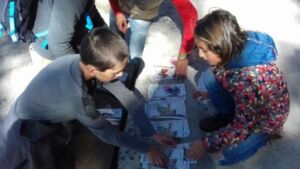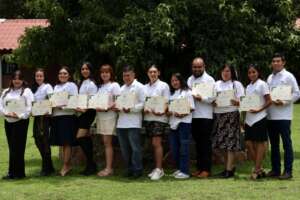Before joining our board, Dr. Ek del Val de Gortari and her colleagues completed field guides for the Monarch Butterfly Biosphere Reserve in 2017. The guides will provide information to help visitors identify the most common species of butterflies, plants, birds, mammals, amphibians and reptiles in the region.

Felipe Martinez, Director of the MBBR, Ek and plant experts, Dr. Guillermo Ibarra, and M.S. Guadalupe Cornejo, as well as reptile expert, Biol. Jonatan Torres, visited the El Rosario community to lead a workshop on how to best use the field guides. El Rosario has one of the largest butterfly colonies so naturally, the team started there. A total of 20 community members, including four tourist guides attended the workshop which involved a walk through the forest where participants identified plants and butterflies using the field guides. Ek and her colleagues distributed 2,500 guides (500 of each category: butterflies, plants, birds, mammals, reptiles, and amphibians). Field guides can be found on our publications page.
On December 14, 2017, Ek del Val de Gortari, along with herpetologist, Jonatan Torres were in El Rosario, to carry out the second workshop for tourist guides. Ek and Jonatan invited 30 people from the community involved in the sanctuary and those responsible for the horses that take tourists. They both explained that the purpose of the field guides is to learn about the immense biodiversity in the Monarch Butterfly Biosphere Reserve and share it with visitors.

The tour guides looked for the species they knew and recognized them. They were interested in the amphibian and reptile guides since there are a lot of myths and beliefs around them and they were surprised to discover that most snakes in the Reserve are not poisonous and that the fake scorpion (Barisia imbricata) is also harmless. Jonatan talked with the personnel, answering all their questions, and pointing out the characteristic features of each group of species.






